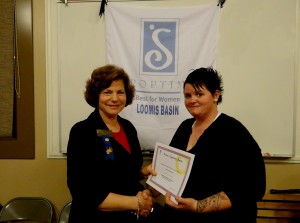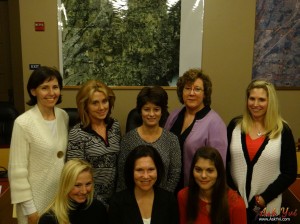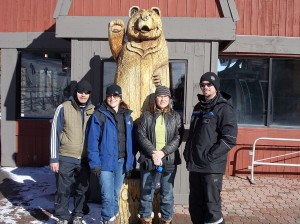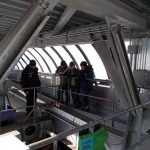 Congratualtions to Sierra College students, Kathryn Potts who won the Women’s Opportunity Award from Soroptimist International Loomis Basin.
Congratualtions to Sierra College students, Kathryn Potts who won the Women’s Opportunity Award from Soroptimist International Loomis Basin.
Potts plans to become an automotive technician or an automotive service writer. “I have always liked fixing thing and seeing how they work,” said Potts. “By working in this traditionally male field, I will be able to make a great life for my kids.”
Several Loomis Basin School District teachers also won grants at the ceremony in Loomis on February 27 to enhance thier mathematics programs:
Susan McQueen, 6th grade math and science teacher at Loomis Grammar School, received a grant to buy a supplemental math program that uses visual and kinesthetic approaches to provide students with a foundation for success with algebra.

Top LtoR: Patricia Sleizer; Susan McQueen; Tracey Curry; Dana Swain; Bobbi Nelson; Bottom LtoR Jennifer Ameigeiras; Amanda Tibbitts; Angela Smith
Tracey Curry, 1st grade teacher at Ophir Elementary School, was given an award to purchase tactile manipulative kits that can be used by students to reinforce and practice key first grade math concepts.
Dana Swain, 4th grade teacher at Placer School, received a grant for a banking project to enhance both math and history curricula. This program will reinforce the concept of decimals while working with money, and teach students about banking services, financial institutions and how money impacts us every day as a cornerstone of our economy.
Learn more at the Loomis News Soroptimist awards make a difference — Teachers, community members receive grants and awards.





